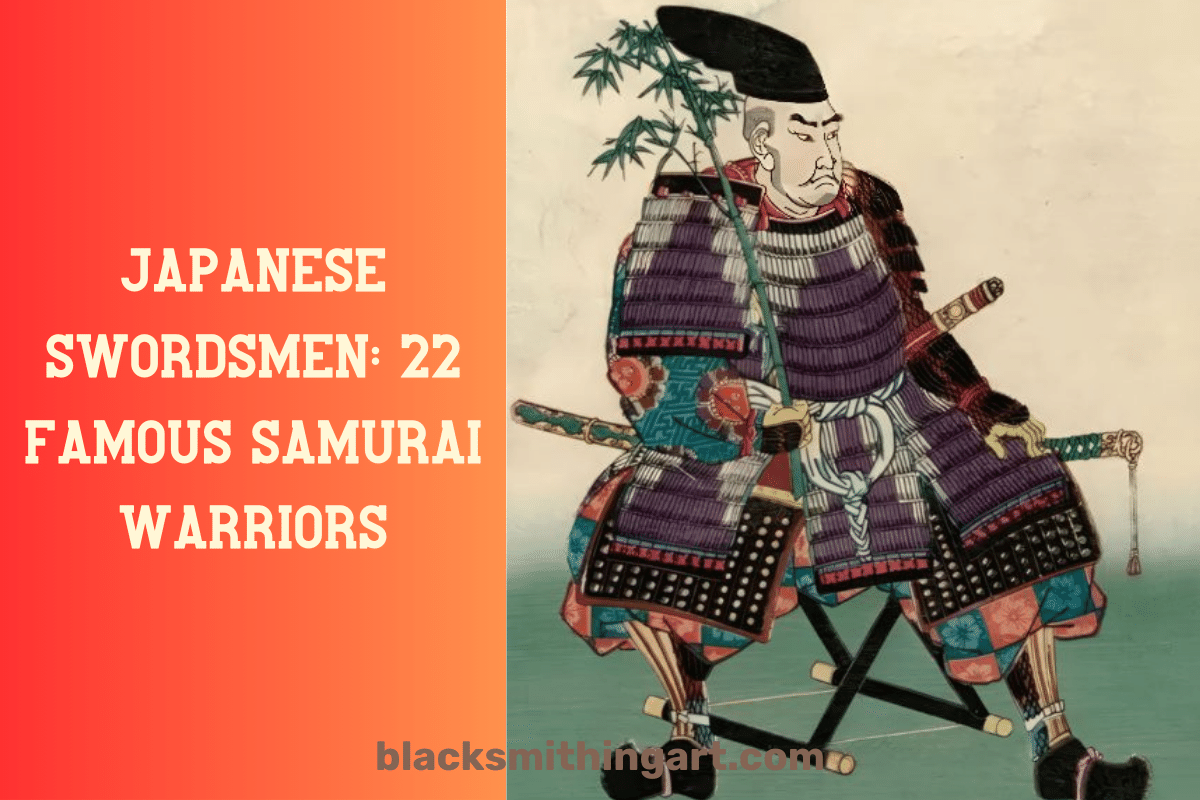
The samurai warriors are a significant part of Japanese history and culture. Samurai refers to a social caste not just any type of soldier. The samurai class originated in Japan in the 12th century and existed until the 1870s.
Japanese swordsmen became some of the most mighty forces in world history. Although formidable and fierce in combat, these famous samurai warriors were poets as much as warriors, upholding strict moral principles, a profound love of beauty, and a peaceful worldview.
The samurai were a hereditary caste with a distinct culture following the bushido martial code. This includes unwavering allegiance and indifference to pain. They also possessed significant military and political power.
Although the Meiji Revolution ended the samurai caste, their influence did not diminish. Even though the samurai still have a significant cultural influence on Japan, many of them have transitioned into commercial or professional roles.
This article will comprehensively dive into the lives of the greatest Japanese swordsmen.
Contents
- 1 Famous samurai warriors in Japanese history
- 1.1 Miyamoto Musashi
- 1.2 Yoritomo Minamoto
- 1.3 Uesugi Kenshin
- 1.4 Toyotomi Hideyoshi
- 1.5 Kato Kiyomasa
- 1.6 Sanada Yukimura
- 1.7 Tokugawa Ieyasu
- 1.8 Akechi Mitsuhide
- 1.9 Takeda Shingen
- 1.10 Ishida Mitsunari
- 1.11 Date Masamune
- 1.12 Kondo Isami
- 1.13 Ito Hirobumi
- 1.14 Yoshitsune Minamoto
- 1.15 Oda Nobunaga
- 1.16 Sakamoto Ryoma
- 1.17 Tomoe Gozen
- 1.18 Hijikata Toshizo
- 1.19 Yasuke
- 1.20 Kusunoki Masashige
- 1.21 Hattori Hanzo
- 1.22 Saigo Takamori
- 2 Weapons and armor
- 3 Sengoku period
- 4 Who is Japan’s most famous swordsman?
- 5 FAQ
- 6 Conclusion
Famous samurai warriors in Japanese history

Below are the most famous samurai warriors in Japanese history.
Miyamoto Musashi

Miyamoto Musashi is among the most famous samurai warriors in Japanese history. He is a hero in Japanese culture. He lived a legendary life and is recognized by many as one of the greatest swordsmen of all time. He started learning the art of swordsmanship at an early age. He was born in the Japanese province of Mimasaka in 1584.
The bokken, a wooden sword used for training, was his preferred weapon. He created his distinct style of swordsmanship based on his training with the wooden sword, believing that mastery of the bokken was a prerequisite to mastery of the real blade. Eventually, he invented the Niten-Ichi-Ryu, a new style of swordsmanship that used two swords rather than one.
Miyamoto Musashi was a ronin because he lacked a master daimyo. He held the record for most sword duels with over 60. He is reported to have killed seventeen people in his battles. He fought in his first combat at the age of 13. Miyamoto Musashi was an extremely powerful and proficient artist, architect, and carpenter.
An average samurai stood 150 cm tall, whereas he was approximately 180 cm. He is renowned for his skill at wielding two swords in his two hands considering that katanas are typically held with both hands.
Miyamoto Musashi wrote a book to help in the training of samurais and the swordsmen. Everyone, especially Japanese martial arts practitioners and business leaders, is advised to read this book.
This famous samurai warrior emphasized that the ultimate objective should take precedence over the techniques. The same tactics that work in one-on-one conflicts also work in army battles.
In addition to his exceptional skill in combat, he took part in three crucial battles that shaped Japanese history: the Shimabara Rebellion, the Battle of Osaka, and the Battle of Sekigahara.
He was likewise a talented artist, he left behind a legacy of wood sculptures, zen brush paintings, and calligraphy, including the well-known masterpieces Dokkodo (The Path of Loneliness) and The Book of Five Rings.
Yoritomo Minamoto
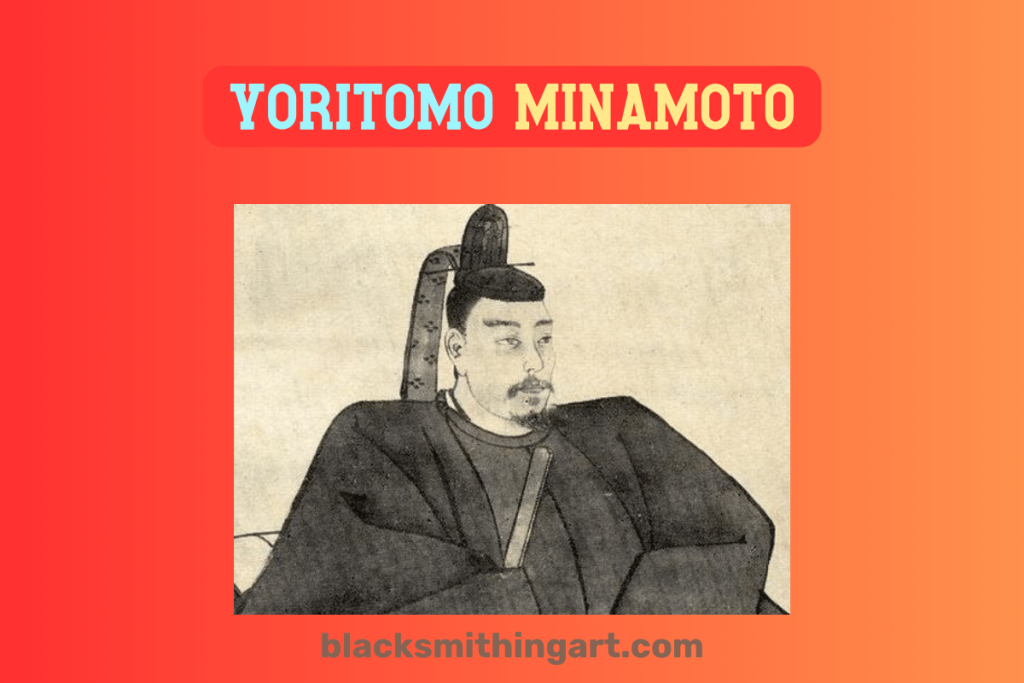
As the first shogun of the Kamakura shogunate, the first shogunate in Japanese history, Yoritomo Minamoto is among the country’s most significant historical figures. Being from the Minamoto clan, he was destined to fight against the opposing Taira clan.
The Taira clan killed his father and many other family members during the Heiji uprising. He spent his early years planning his retaliation in a Buddhist temple.
Prince Mochihito’s encouragement presented him with a chance to attack the Taira. He defeated the Taira after several battles during the Genpei War, establishing his base at Kamakura. There, he became the shogun.
Uesugi Kenshin
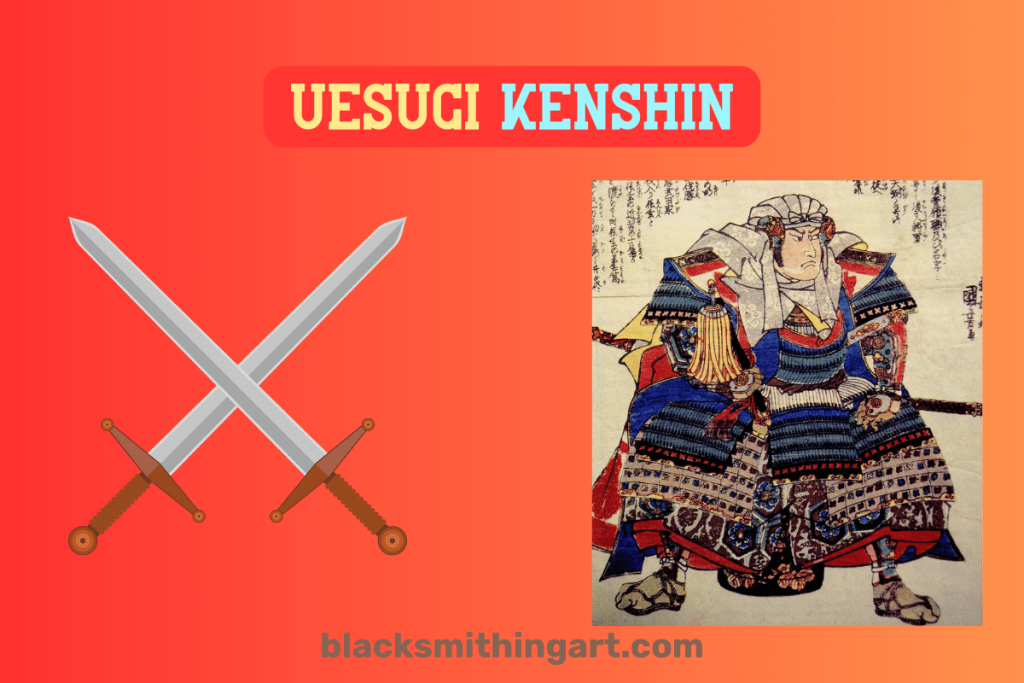
Because of his exceptional and renowned combat abilities, Uesugi Kenshin earned the nicknames “Dragon of Echigo” and “The God of War”.
Kenshin began by using his military expertise and diplomatic abilities to rescue his clan and family from the various enemies in the vicinity. He succeeded in rising to the top and became the sole heir of the entire neighboring clan.
Several notable samurai leaders lived during Kenshin’s time, including Oda Nobunaga, whom he ultimately defeated at the Battle of Tedorigawa.
The fourth battle of Kawanakajima, regarded as the bloodiest of the Sengoku Period, is what made him most famous. Here, Kenshin used a rotating wheel tactic to replace his existing soldiers with fresh soldiers, creating momentum and breaking through layers of enemy defense.
He even engaged in a samurai duel with Takeda Shingen, his strongest rival. Owing to his samurai spirit, he was always able to assess the situation and determine when and how to attack.
Toyotomi Hideyoshi
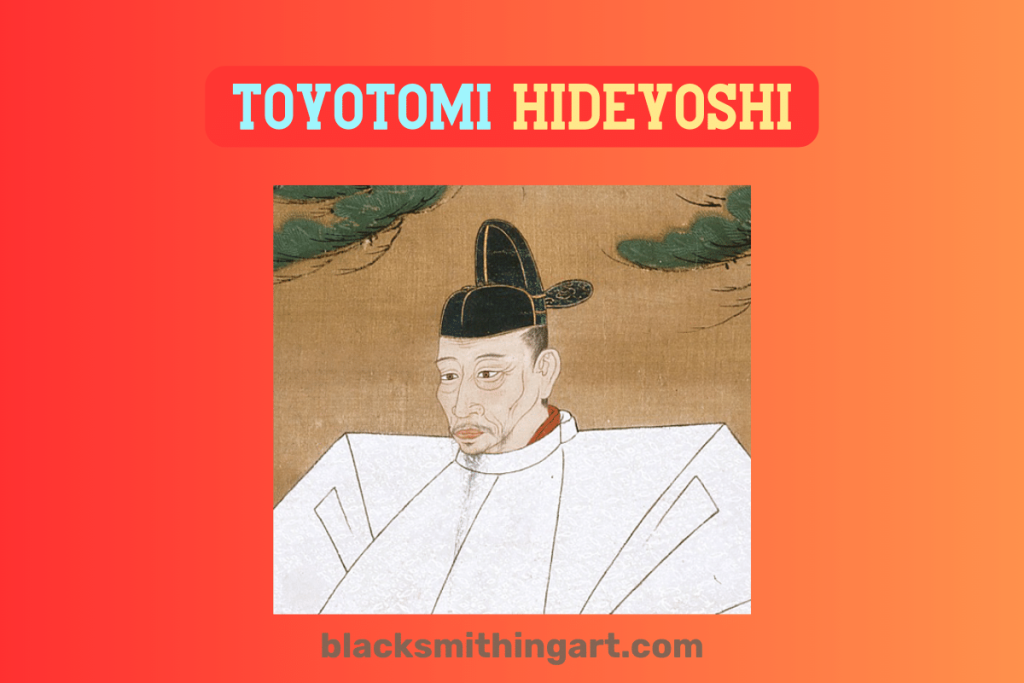
He was also one of the feudal lords. He was the Chief Imperial Minister and lived from 1537 to 1598. He contributed to the finalization of Japan’s unification in the sixteenth century, forming the country that exists today.
He was born a peasant. He was a foot soldier for a while before being promoted to samurai status due to his wit, charm, and intelligence.
Later on, he constructed the Osaka Castle. He engaged Tokugawa Ieyasu in combat while attempting to finish the late Nobunaga’s goal to unite the nation. After a draw in the fight, the two samurai warriors decided to ally.
Later, he rose to prominence as a minister and, with Tokugawa Ieyasu’s help, worked to restore peace to regions, emerging as one of the key players in the unified nation’s government
He established the caste system that marked Tokugawa Japan. The use of weapons was prohibited for farmers, merchants, and monks. Meanwhile, class distinctions were enforced, with warriors, artisans, farmers, and tradesmen assigned specific locations in towns and villages.
He also supervised the demolition of several castles to lower the number of Japanese strongholds. He conducted land surveys and abolished road checkpoints to facilitate easier transportation.
Toyotomi Hideyoshi’s goal as he grew older was to conquer Korea. He strengthened the samurai class, however he lost both wars against Korea despite agreeing to a short-term truce with China. Toyotomi Hideyoshi is largely responsible for most of our perceptions of the Tokugawa Shogunate period.
Kato Kiyomasa
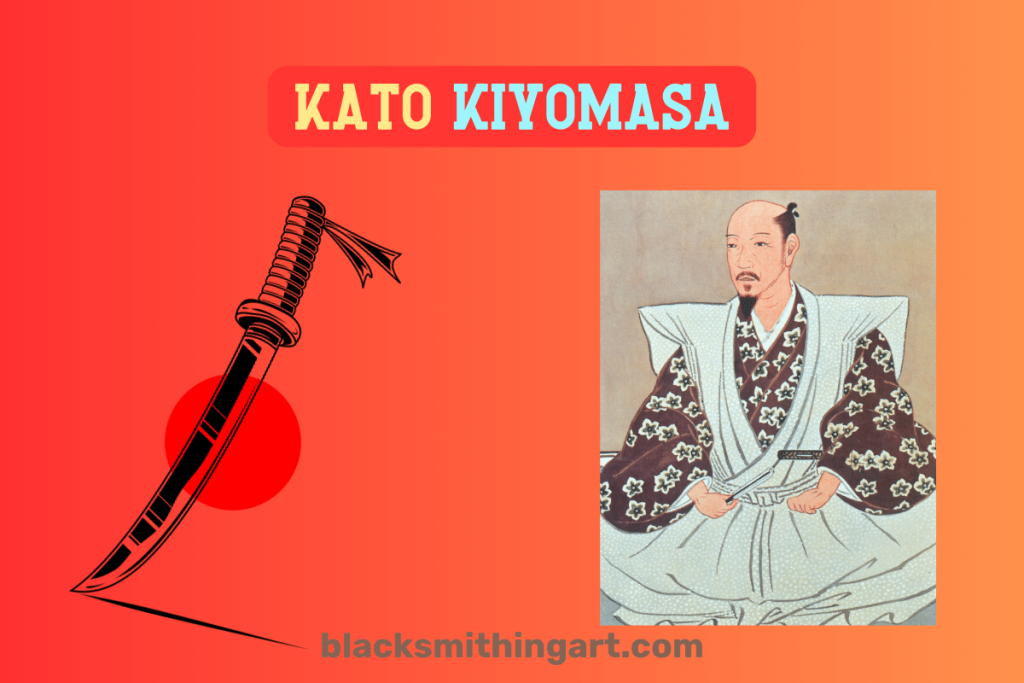
He played a crucial role alongside Toyotomi Hideyoshi and Tokugawa Ieyasu in the unification of Japan. His nickname, “Devil Kiyomasa,” came from fighting with Hideyoshi, who was his relative, during the Korean campaign.
He served as one of the Seven Spears of Shizugatake (Hideyoshi’s bodyguards) during the Battle of Shizugatake and was rewarded with a significant amount of land. He constructed several Buddhist shrines and suppressed Christianity. After serving as a mediator for Hideyoshi and Ieyasu on numerous occasions, he became sick and eventually passed away.
Sanada Yukimura

Sanada Yukimura, also going by Sanada Nobushige, was taken as a captive as a young child, first by the Uesugi clan and then by Toyotomi Hideyoshi, to whom his father had sworn loyalty. Nevertheless, these difficult circumstances were simply going to be a prelude to him becoming one of the most famous samurai warriors in Japanese history.
In reality, Yukimura displayed his martial prowess as early as the Battle of Kyushu, when he faced the powerful Shimazu clan. The notable titles of “the number one warrior of Japan” and “a hero that arises once in a hundred years” were bestowed upon him for his heroism in the Imjin War against the Koreans.
He also fought against Tokugawa Ieyasu, another prominent Japanese samurai leader. His major triumph against a substantial enemy force at the Siege of Ueda (1600) significantly changed the course of the war. After a fourteen-year banishment, he returned to Osaka Castle to support the Toyotomi heir.
Here, he took his last stand and gave his everything to protect the Osaka castle. During this conflict (1614–1615), he launched one last audacious attack and almost killed the enemy general in front of his whole army.
It is believed that the renowned swordsman Yukimura, tired from the prolonged battle, asked, “Who dares to take my head?” while seated on a stool. Sanada Yukimura is revered as a symbol of resistance even today, honored for his unshakable adherence and dedication to the samurai code of honor to the very end.
Tokugawa Ieyasu

Tokugawa Ieyasu was the son of the daimyo of Mikawa Province, which is now a part of Aichi Prefecture. He was taken hostage by the Oda Clan in Nagoya when he was five years old for political leverage.
When he was six, his father was assassinated by his vassals, who had received bribes from the Oda. Oda Nobunaga consented to Ieyasu’s transfer to Sunpu at the age of nine, following the unexpected death of the Oda patriarch. There, he was held captive by the Imagawa Clan until the age of thirteen, at which point he joined them in their battles against the Oda.
Following the unexpected death of Imagawa leader, Yoshimoto at the hands of Oda Nobunaga, Ieyasu decided to defect and join the Oda. His samurai warriors were a part of Nobunaga’s army that conquered Kyoto in 1568.
After allying with Takeda Shingen to seize Suruga Province, which is now central Shizuoka Prefecture, he then joined forces with Uesugi Kenshin to betray his former ally.
Ieyasu was determined to win at all costs. After learning that his wife and first son had planned to kill Oda Nobunaga, he had his wife put to death and made his son commit suicide. As a result, he named his third son, Hidetada, as his heir, since his second son was already adopted by Toyotomi Hideyoshi.
Hideyoshi beat Ieyasu to exact revenge on Akechi Mitsuhide for betraying Oda Nobunaga. Subsequently, he disapproved of Hideyoshi’s proposal to appoint the young Hidenobu as the new leader of the Oda Clan.
Meanwhile, he refrained from participating in Hideyoshi’s battle with Shibata Katsuie in 1583, nor did he take part in capturing Shikoku and Kyushu. He did, however, participate in the Siege of Odawara, and he was afterward granted the former provinces of the Hojo Clan in the Kanto Plain.
Even though he was granted command over reserve forces in Kyushu, he didn’t directly participate in Hideyoshi’s unsuccessful Korean campaigns.
Following Hideyoshi’s death in 1598, Ieyasu was chosen to be among the Council of Five Elders to lead the newly unified nation until Toyotomi Hideyoshi’s five-year-old son, Hideyori, reached adulthood. However, Ieyasu formed alliances with the daimyo dissatisfied with Toyotomi rule.
In 1600, at Sekigahara in what is now Gifu Prefecture, his forces fought against those of Ishida Mitsunari, who had garnered support from Toyotomi supporters. With over 160,000 troops taking part in the battle, Ieyasu’s victory in the Battle of Sekigahara reinforced his control over the country.
Emperor Go-Yozei gave Ieyasu the title of shogun in 1603 when he was sixty years old. The Edo Period (1603–1868) of Japanese history began when he established his capital at Edo (now Tokyo) on the territory he acquired from the Hojo.
When Hideyoshi’s son Hideyori led an army to challenge him in 1614 and 1615, Ieyasu came out of retirement to personally command his armies in the two winter and summer sieges of Osaka, which involved 200,000–300,000 troops each and ended with the destruction of the Toyotomi line.
Ieyasu passed away at the age of 73 in 1616. He is currently enshrined at the prestigious Nikko Toshogu Shrine in Tochigi Prefecture. After more than 250 years, the Tokugawa Shogunate came to an end in 1868 with the Meiji Restoration. It’s also important to note that Hattori Hanzo, a ninja, was one of Ieyasu’s most well-known vassals.
Ieyasu was a patient, pragmatic, and astute strategist who championed a vision of unification that fundamentally changed Japan. He displayed calmness and insight amid the conflict, which corresponded to the fundamentals of the samurai’s bushido code.
Akechi Mitsuhide
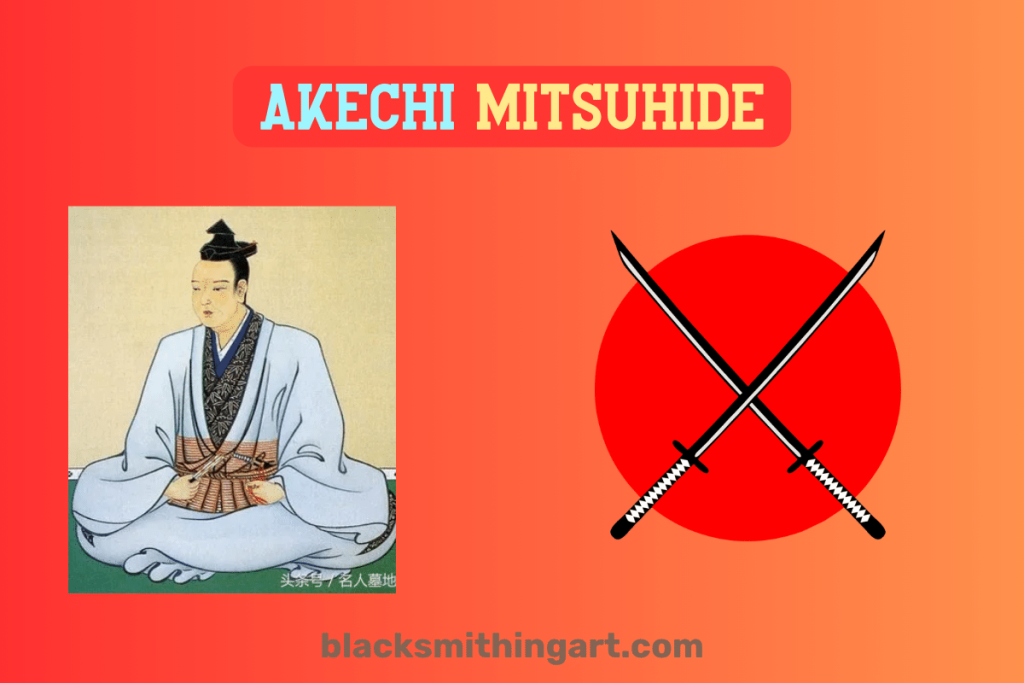
He served as both a general and a daimyo of the Akechi clan under Oda Nobunaga. He commanded his warriors to assassinate his master, Oda Nobunaga. Not long after, a ronin killed him, and Toyotomi Hideyoshi took control of Japan.
While such betrayals are rare, many claim that Akechi was enraged because his master had openly humiliated him and had assassinated the leaders of a prominent clan, who had then taken Akechi’s mother hostage and killed her.
Takeda Shingen
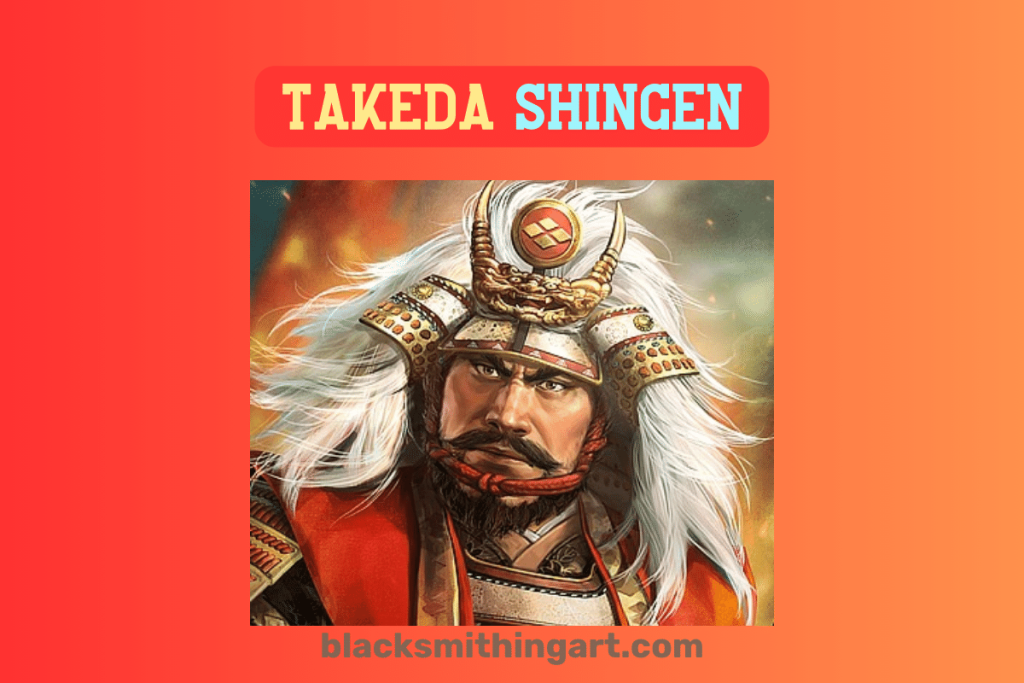
Takeda Shingen, also known as Haronubu was one of the most prominent feudal lords in Japan during the Sengoku period.
He was well-known for his feud with Uesugi Kenshin, another renowned warrior. He was born into a family of military governors, and he eventually overthrew his father as the clan’s leader. He began to spread out into nearby regions, amassing a sizable amount of land for his family.
He assumed the name Shingen and was ordained as a Buddhist priest in 1551. He began his rivalry with Uesugi Kenshin around that time, and the two engaged in five battles in the Battles of Kawanakajima.
He also triumphed over Tokugawa Ieyasu in the Battle of Hamamatsu.Although there are numerous theories of how he died, the most well-known one is presented in Kurosawa’s film “Kagemusha,” which claims he was shot once by a sniper.
Ishida Mitsunari
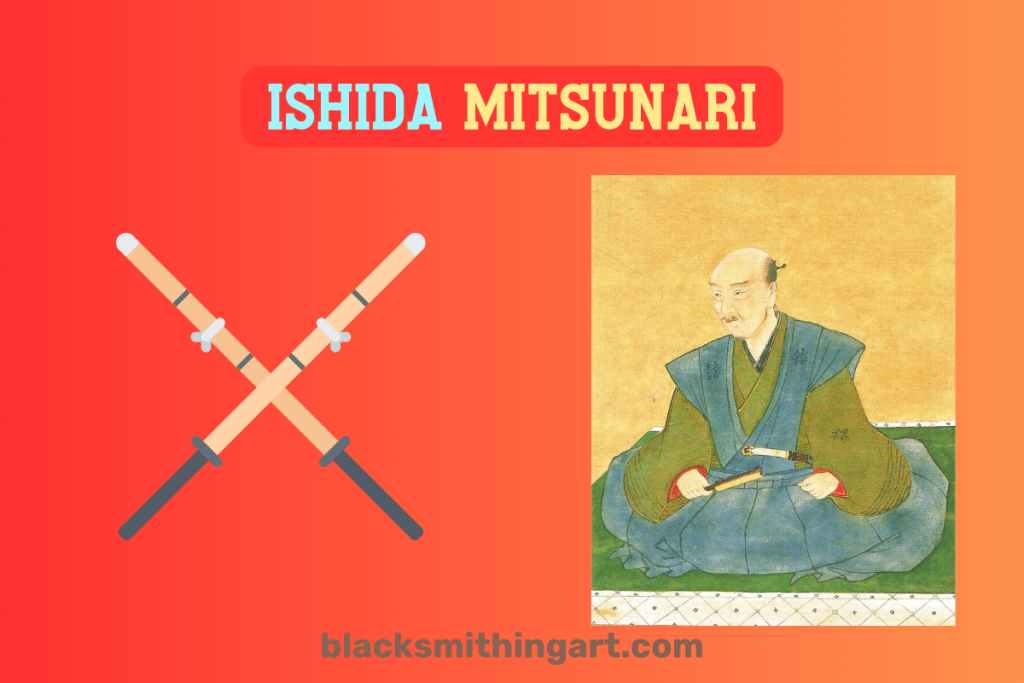
He led the Western army during the battle of Sekigahara. He encountered Toyotomi Hideyoshi who ended up employing when he was thirteen years old after serving him three cups of tea.
He went on to become Hideyoshi’s administrator and financial manager, handling, among other things, diplomatic ties with foreign countries.
Mitsunari quickly lost faith in Tokugawa Ieyasu, one of the five rulers who ruled in the name of Hideyoshi’s five-year-old son after his demise. He later went to war with Tokugawa Ieyasu and lost. He was later caught and killed by peasants.
Date Masamune
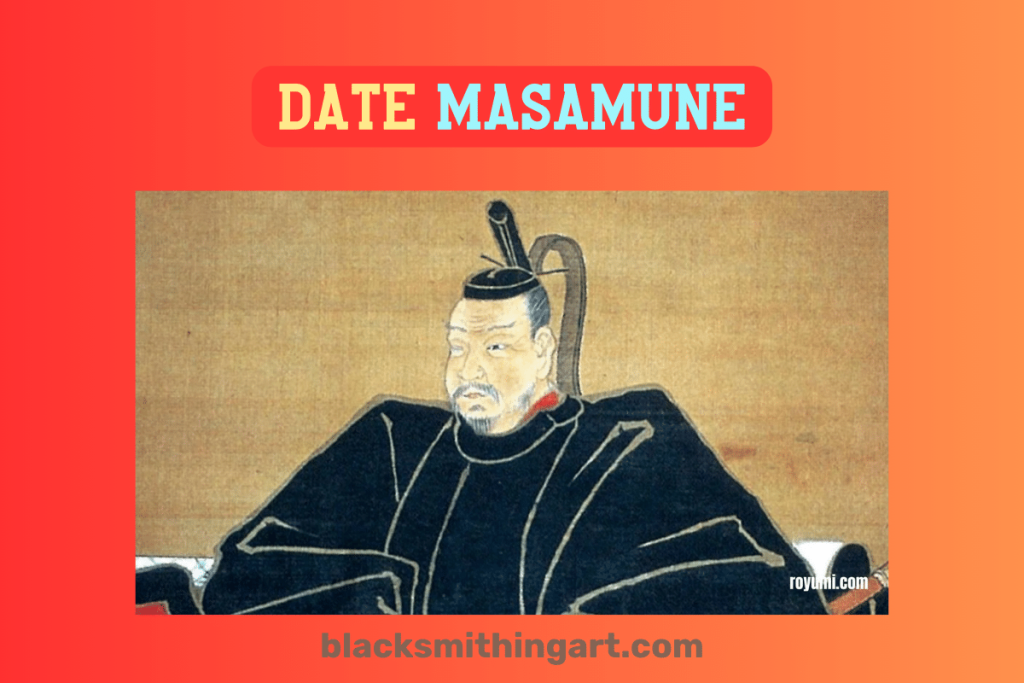
Date Masamune, the Japanese samurai warrior who founded Sendai, lived from 1567 until 1636. He was known as a master strategist and for his military prowess. He lost vision in his right eye as a kid due to smallpox, and this eye was later removed.
He eventually became known as the “One-Eyed Dragon of Ōshu” as a result. He became the leader of the Date clan and reinforced their dominance.
During the Tokugawa-Toyotomi Civil War, he remained neutral for a very long time until Toyotomi Hideyoshi, his overlord, forced his hand and had him give up a large portion of his land. He became one of the most prominent lords by supporting Tokugawa Ieyasu after Hideyoshi’s death.
Sendai was a small fishing village that grew into a flourishing city when he moved there with his family, and 52,000 vassals after discovering that the land he had been given wasn’t as productive as expected.
Ieyasu never really trusted him due to his power and support for foreign causes, even though Ieyasu later bestowed him with more lands.
Masamune was well-known for having great empathy for the growing Christians in Japan; only after Ieyasu banned Christianity did he reluctantly permit their persecution in his territory.
Due to his sponsorship of an expedition ship, a tiny group of descendants of Japanese people currently reside in Spain; their ancestors fled Japan due to Christian persecution.
Kondo Isami
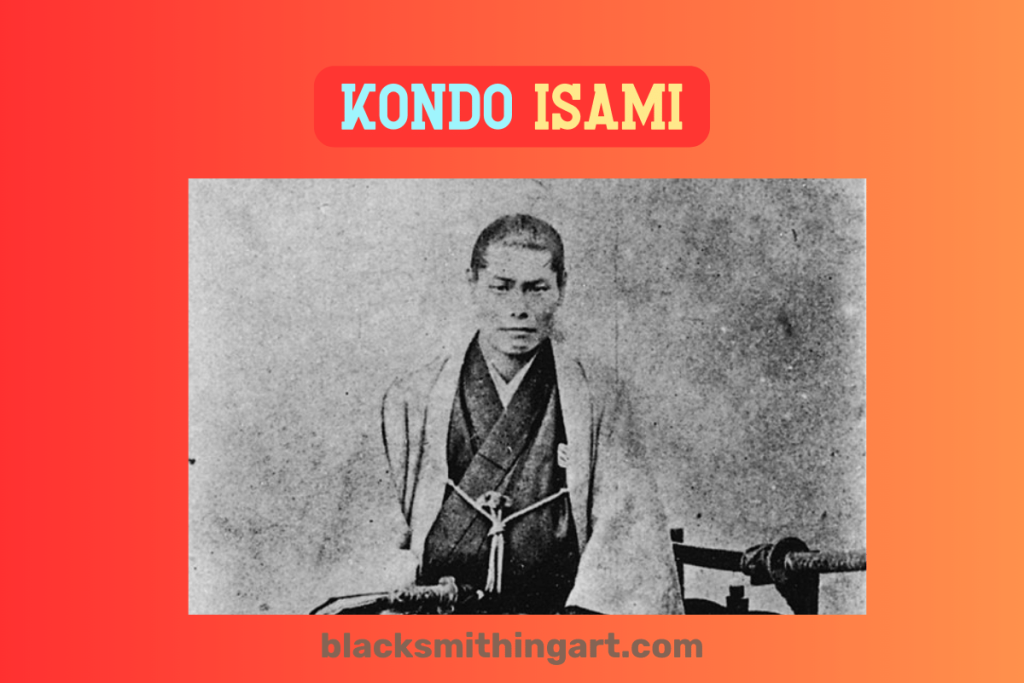
He was a skilled swordsman and commander of the Shinsengumi. The master of Tennen Rishin-Ryu, a Japanese martial art performed by the Shinsengumi, Kondo Shusuke, adopted him after being moved by the bravery of the then, 13-year-old kid who had just protected his family home from a gang of robbers.
Isami proceeded to become the Tennen-Rishin-Ryu’s fourth master. He was severely injured at the battle of Toba-Fushimi and nearly escaped the Imperial Forces at the Battle of Koshu-Katsunuma.
Finally, in 1868, during training, he was caught by surprise by the Imperial Forces, apprehended, and executed at the Itabashi execution grounds. His head was displayed in public, however it was eventually stolen and buried behind an old shrine in Okazaki.
Ito Hirobumi
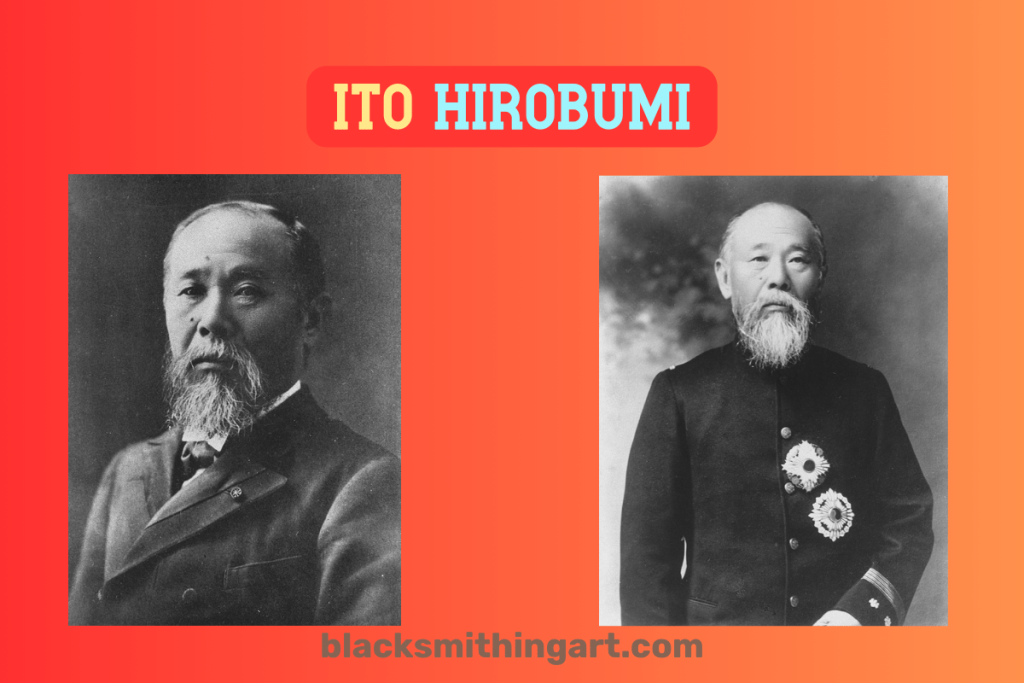
He was the first prime minister of Japan to come from a samurai family. Because he had studied in England, he was influenced by Western models when drafting the Meiji Constitution. He was appointed as Japan’s first prime minister in 1885, a role he would hold for three more tenures, the longest tenure in Japanese history.
He was appointed the first Japanese Resident-General of Korea when the Japan-Korea Treaty was signed in 1905. He also assumed the position of President of the Privy Council of Japan when Korea was subsequently annexed. A Korean nationalist and independence activist killed him at the Harbin Railway station.
Yoshitsune Minamoto
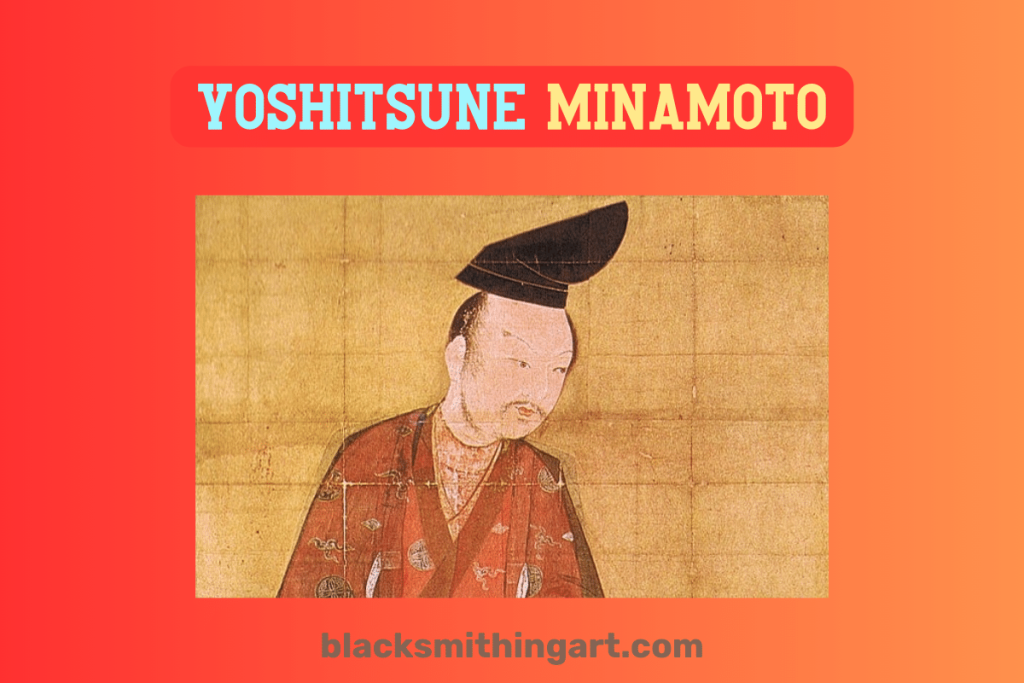
When Yoshitsune Minamoto was just one year old, his older brothers and father were killed during the Heiji Rebellion, however, he and his mother were able to escape. Despite being brought up by the monks at Kurama Temple, he had no desire to become a priest. One of his most well-known companions was Benkei who was a Sohei (warrior monk).
Benkei was out and about in Kyoto one night, pursuing his goal of taking a thousand swords from samurai warriors. After taking 999 swords, he fought Yoshitsune Minamoto, a man significantly smaller than him, and lost.
He joined Yoshitsune in his fights against the Taira clan as a sign of respect, and he went on to become renowned in Japanese folklore for his loyalty, courage, and valor.
He was killed by arrows on the bridge that led to the castle of Koromogawa while defending Yoshitsune, who had to commit seppuku (ritual suicide) in the castle after being betrayed by his brother Yoritomo.
Oda Nobunaga
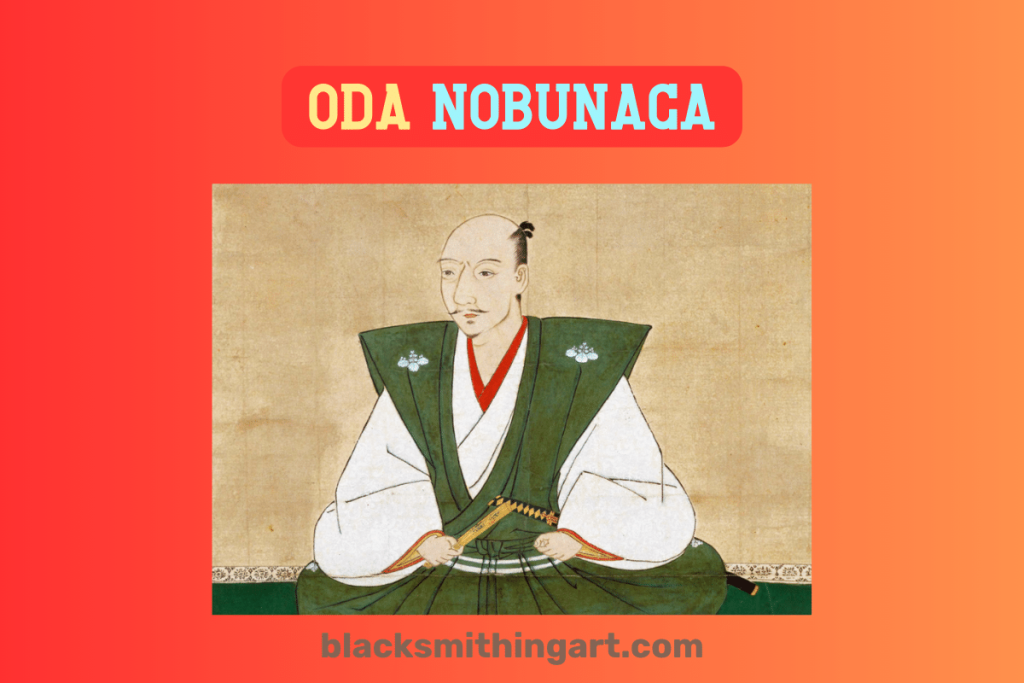
Although Miyamoto Musashi is arguably the most popular “samurai warrior” in the world, Oda Nobunaga (1534–1582) is the most revered samurai warrior in Japan. He is a hero in Japanese culture. Apart from his exceptional combat skills and strategic acumen, he initiated the chain of events that led to the country’s reunification and the end of the Sengoku Period.
The feudal system collapsed after the Onin War in 1467–1477, when all of the daimyos, or feudal lords, declared their independence and dominated one another in an attempt to gain more authority. This was known as the Sengoku Period or the Warring States Period.
However, the Demon King, Oda Nobunaga, a samurai leader born in the Owari Province in 1534 (the same province where Nagoya Castle is located) was able to bring the situation under control.
Oda Nobunaga was reported to have been unpredictable, erratic, and even disrespectful when he was an adolescent. During his father Oda Nobuhide’s burial, for example, he showed such disdain that one of the clan’s most loyal samurai, feeling ashamed, performed seppuku, or ritual suicide.
Oda Nobunaga was legitimately meant to succeed his father as leader of the Oda clan, however, this was put on hold due to an internal power struggle involving his uncle and younger brother. He had to get rid of his rivals(first his uncle, then his younger brother) to become the clan’s leader.
After these incidents, Oda Nobunaga disregarded the advice of his counselors and launched an attack against a 25,000-man army from the rival Imagawa clan with just 3000 men. He ambushed his enemies in a narrow gorge after using dummy soldiers to intimidate them in the dark.
He was recruited by the Ashikaga Shogun in 1568 and taken to Kyoto as protection from other daimyos. Although at first, they were partners, Nobunaga gradually took control by restricting the Ashikaga Shogun’s authority. Historians refer to the moment as the start of the Azuchi-Momoyama period and the end of the Muromachi (Ashikaga) period.
Despite his numerous victories, one of his brothers was assassinated by the Ikko-Ikko warrior monks, a group of religious rebels whom Oda Nobunaga has lost to a couple of times.
Driven by their persistent uprisings against his rule, Nobunaga launched a siege on one of Japan’s largest temples in 1571, burning it down and killing thousands of monks, laymen, women, and children in Mount Hiei, which is located north of Kyoto City. This Japanese samurai warrior became known as the Demon King or Demon Daimyo since then.
Around 20,000 people perished when he carried out a similar act in 1574, setting fire to the Nagashima towns of the Ikko-Ikko.
The army of the Takeda clan, renowned for its cavalry, was defeated in 1575 by Oda Nobunaga’s forces thanks to arquebuses that he acquired from Westerners. Roughly ten thousand Takeda clan fighters perished close to Nagashino Castle. He acquired all the territories of the Takeda clan in 1582, even though their leader survived.
It was widely acknowledged that Oda Nobunaga was fascinated by European culture. He even supported Jesuit missionaries who brought Christianity to Japan. He allegedly became a Christian, according to certain historians.
He built the largest and arguably most beautiful castle at the time, Azuchi Castle in 1578. This magnificent building was erected on a hill with a view of both Eastern and Western Japan.
Unfortunately, the Iga region’s ninja clans posed a threat to Central Japan. These independent mercenaries were hired as spies. In 1579, Oda Nobuo, Nobunaga’s son, was defeated by these ninjas. The ninja’s independence was put to an end in 1581 when the Oda clan carried out their retaliation by encircling the Iga region with an overwhelming 44,000 Japanese samurai warriors.
Oda Nobunaga was occasionally disrespectful towards the men around him. He was once called Akechi Mitsuhide Hage (baldy) and Toyotomi Hideyoshi Saru (Monkey). Additionally, he slaughtered a few prominent war prisoners, whose relatives subsequently murdered Akechi’s mother.
On June 21, 1582, as he and a small group of attendants were holding a tea ceremony at the Honnoji Temple, thousands of samurai warriors were waiting outside to execute him.
He ordered his attendants to set fire to the temple to perform seppuku and escape being captured. None other than one of his closest generals, Akechi Mitsuhide, commanded these samurai warriors.
The whole concept of samurai warfare was changed by the revolutionary samurai leader Oda Nobunaga. He greatly improved his forces’ battle techniques by effectively introducing and spreading the usage of gunnery tactics.
He was a true samurai warrior and an innovator who frequently defied conventional wisdom. His leadership and tactical abilities set the foundation for his successors to completely accomplish Japan’s unification.
Sakamoto Ryoma
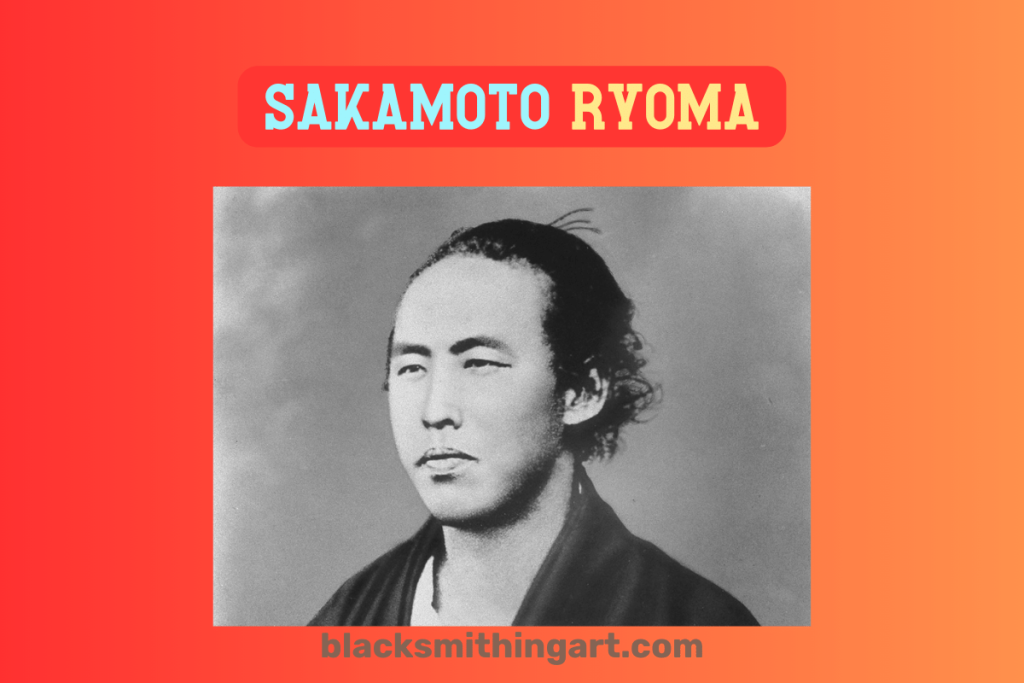
He is one of the most adored and respected Japanese heroes. He is celebrated in Japanese popular culture and is referred regarded as a “Japanese Che Guevara”. In addition to fighting the Tokugawa shogunate, he was well-known for his innovative work and reforms that aimed to create a more fair, democratic Japan.
His ability to bring the provinces of Choshu and Satsuma together was crucial in the downfall of the Tokugawa shogunate in the Boshin War.
He is honored with two landmarks named after him in Kochi: the Sakamoto Ryoma Memorial Museum and the Kochi Ryoma Airport.
Tomoe Gozen

Tomoe Gozen, one of the few historical female samurai warriors, was regarded to be extremely beautiful. Her beauty was complemented by her skill at arms and on horseback.
Her father, Nakahara Kanetō, had been a close ally of Minamoto no Yoshinaka, and she carried on his devotedness. She fought beside him in the Genpai Wars, leading 300 samurai to victory against 2,000 Taira clan soldiers.
The life of Tomoe is legendary. She killed the famous samurai warrior Uchida Ieyoshi and decapitated Musashi’s Honda no Morishige. She was regarded as Japan’s first general as a result of her achievements.
Over the years, her story and talent have been the subject of numerous novels, video games, manga, etc., solidifying her place in Japanese pop culture.
Hijikata Toshizo
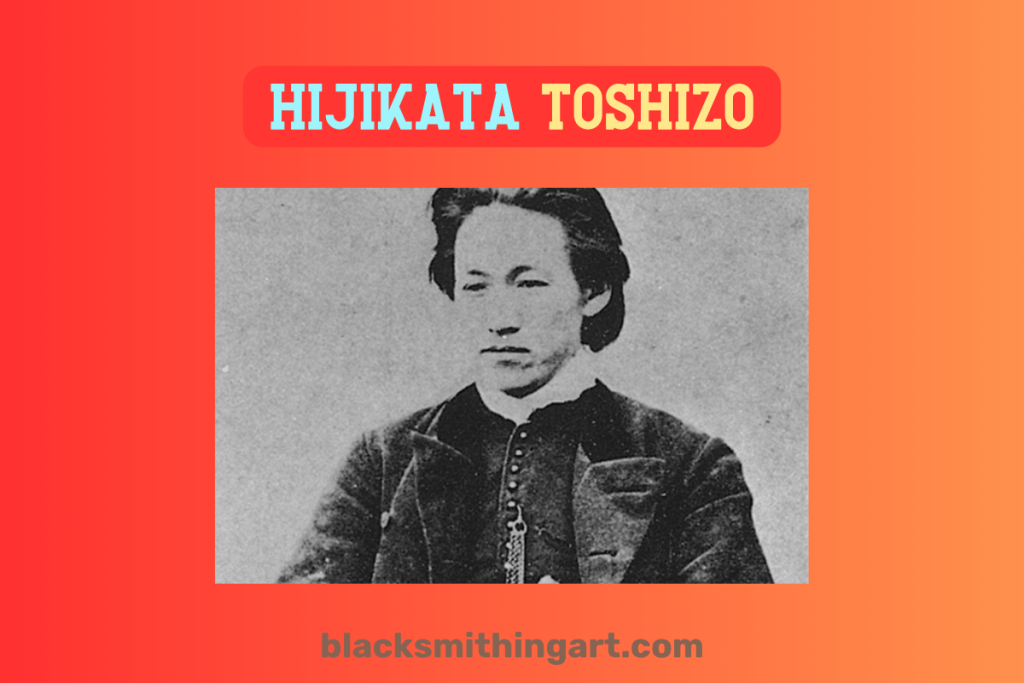
He was born on May 31, 1835, in Hino City, which is located on the western outskirts of present-day Tokyo.
His mother passed away a few years after the death of his father, a wealthy farmer, and he was brought up by his elder brother and sister-in-law.
He was taller compared to the typical Japanese men at the time, and he was reported to be highly attractive. He was said to be spoilt from an early age and alleged to be mean to everyone except his friends and family.
After learning swordsmanship on his own, he subsequently attended Tennen Rishin Ryu’s dojo in Hino, where he met Kondo Isami, the fourth Soke of Tennen Rishin Ryu, and later the commander of the Shinsengumi, an exclusive militia unit established to put an end to unrest in the capital and defend the shogun against anti-bakufu movements.
Kondo Isami, Niimi Nishiki, Serizawa Kamo, and Hijikata were the leader and deputy leaders of the Shinsengumi. The Shinsengumi’s reputation became that of a gang of outlaws after Serizawa and Niimi started extorting money from Kyoto’s merchants while drinking, gambling, and fighting whenever they felt like it.
Hijikata ordered Niimi’s seppuku and Serizawa’s assassination.
The force grew to 140 members. Hijikata made sure that the rules of the Shinsengumi were properly adhered to, that traitors and deserters were forced to commit seppuku, and that anyone who disobeyed the rules faced harsh penalties. This made him known as the Devil Vice Commander.
He became the commander of the Shinsengumi after Kondo Isami’s surrender and execution by the Imperial forces. He later became the Vice Minister for Military Affairs in the newly established Ezo Republic and took control of the star-shaped Goryokaku fortress in Hakodate, Hokkaido.
He lost his life at the age of 34 while battling the Meiji government at the Battle of Hakodate. He was shot in the lower back and killed on June 20, 1869.
Yasuke

The African slave Yasuke was transported to Japan in 1579 by Alessandro Valignano, a Jesuit missionary. His arrival created quite a stir as no black person had ever been seen in Japan before.
The most formidable warlord of the time, Oda Nobunaga, summoned him for an audience. Shocked by his physical appearance, the warlord ordered him to strip to the waist and rubbed his skin to prove that he wasn’t painted with ink.
His strength and stature, approximately 188 centimeters (6 feet 2 inches) in height, greatly pleased Nobunaga, who appointed him as his servant and bodyguard. He was promoted to samurai status in 1581 and assigned to Azuchi Castle, where he dined with the warlord and served as his sword carrier.
While some suggest he may have originated from Mozambique, Angola, Ethiopia, or even as a European slave from Portugal, no one is certain of his birthplace.
Kusunoki Masashige

Kusunoki Masashige, an Osaka native, is still revered as the model Japanese samurai warrior. Many samurai warriors were extremely impoverished and furious in 1294, the year of his birth because they felt the government had not given them enough compensation for their battle against the Mongolians.
A group of Japanese samurai warriors who did not support the current government came together to form the Akuto. Although he belonged to this group, barely anything else is known about his early years.
The 96th emperor of Japan, Go-Daigo, was forced to flee in 1331 after his conspiracy to overthrow the government came to light. He seeks refuge at Mt. Kasagi in South Kyoto.
He declared war on the government. Masashige was among the first to swear allegiance to the Emperor. Even though the odds were stacked against them, he was confident that his cleverness would make them prevail.
The government was gravely mistaken to believe that they could put an end to the revolt in a matter of hours. Kusunoki Masashige used unconventional strategies. His warriors lacked sophisticated swords and armor. Therefore, the Samurai began to attack everyone who attempted to storm their Kawachi castle with rocks and hot water.
The Emperor chose to burn down his castle and escape as word spread of his capture, leading the government to believe he and his soldiers had died in the fire.
He gathered his warriors and a thousand residents in his native city of Osaka. The government retaliated strongly, besieging the small army and cutting off their supplies. However, he had anticipated this and created a secret pathway for supplies for his soldiers.
The besieging forces ended up starving instead of his warriors. This triumph motivated many disgruntled citizens and compelled the Emperor to come out of exile to lead a fresh attack to topple the government.
Despite all this, the samurai warriors kept being mistreated and were denied land gifts that they needed to escape poverty. Under the leadership of Ashikaga Takauji, whom Masashige had assisted in escaping to Kyushu, a second uprising and alternative government emerged in Kyushu.
Masashige urged the emperor to reach a peace agreement, but he declined. He then attempted to persuade the Emperor to go into exile, but that was also rejected. In the end, with almost little chance of success, Masashige led an army of 899 soldiers against Ashikaga’s over 200,000.
He killed himself when his army was reduced to seventy. This Japanese samurai warrior is revered as a hero, particularly in his home city of Osaka, and has gained immense popularity as a result of his loyalty and cleverness.
Hattori Hanzo
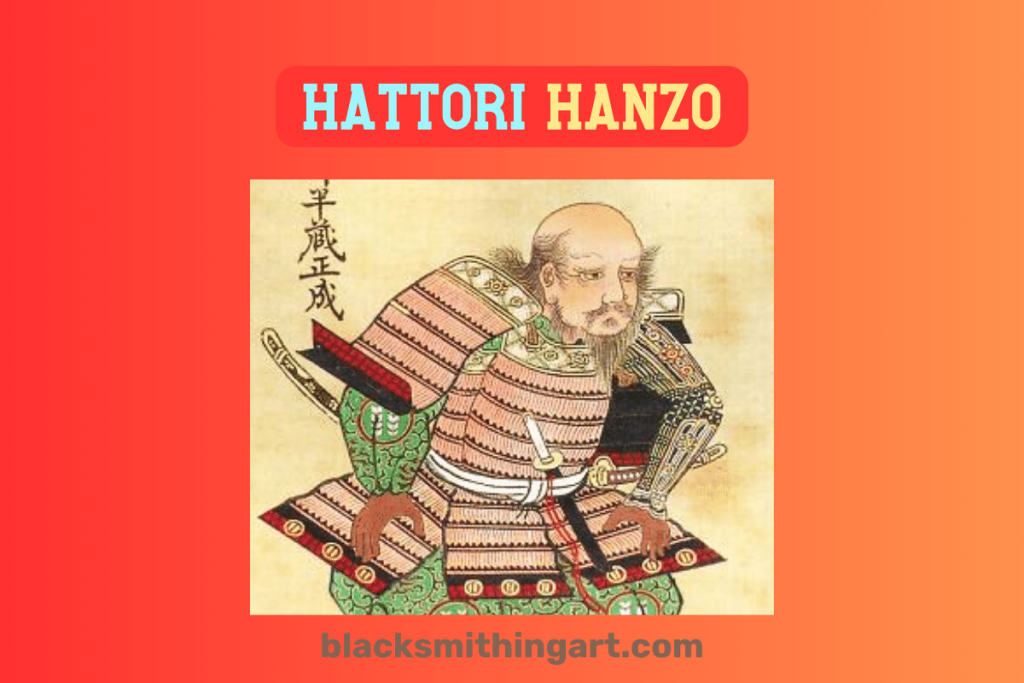
Japanese samurai warrior, Hattori Hanzo (also known as Hattori Masanari) served the Tokugawa clan. He was renowned for being a courageous warrior who accomplished numerous feats for the clan, such as rescuing the daughter of Tokugawa from a castle and besieging another.
He helped in escorting Tokugawa Ieyasu to safety after the demise of Oda Nobunaga. He served until his untimely passing at the age of 55. It is said that he either died unexpectedly while hunting, battled a pirate, or lived out his final days as a reclusive monk.
He was dubbed “Demon Hanzo” because of his fierceness and military prowess. His ties to his native Iga Province, the center of ninjutsu, made him deeply associated with ninjas.
Saigo Takamori
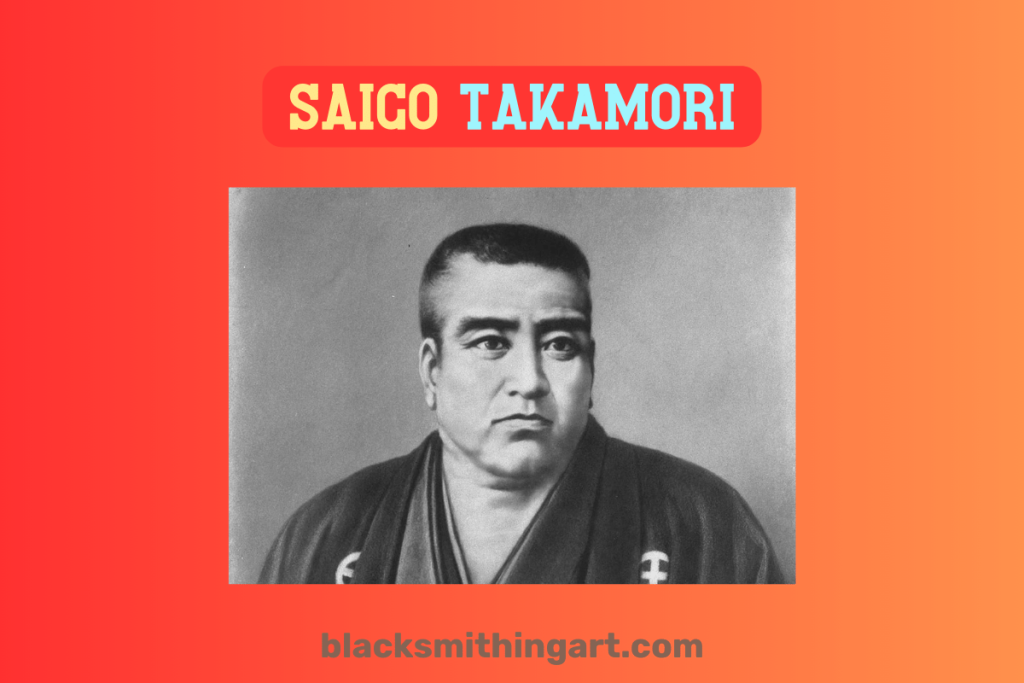
Japanese culture celebrates Saigo Takamori as a national hero for his resistance against modernization and for being the last true samurai. After his master passed away when he was a young man, he tried jumping into a lake to end his life by an ancient junshi custom, however, he lived.
Japan’s 220-year-old policy of seclusion (sakoku) came to an end when it was forced to sign the Treaty of Kanagawa and open its ports to American ships under the leadership of Commodore Matthew Perry. This also revealed the weaknesses of the military dictatorship (shogunate).
Emperor Meiji tried to modernize the country, dissolve the samurai class, and overturn the previous political structure as a result of this incident, which led to the Meiji Restoration.
After the Samurai way of life was endangered by the reforms, which included a ban on sword carrying in public and an order to wear their hair in Western fashion, Saigo quit his government positions and started his school, which attracted up to 20,000 teenage samurai warriors. He then led the Satsuma revolt against the central government.
Although the circumstances of his death during the revolt are unclear, it is believed that this Japanese samurai warrior committed seppuku, either by himself or with the help of another samurai warrior.
Weapons and armor

Samurai warriors were renowned for being skilled with a variety of weapons, including swords and, bows and arrows.
While it is not advised to brandish actual weapons in modern-day Japan, there are samurai experiences found all around the nation that allow visitors to experience what it was like to be a samurai warrior in the past.
The Samurai & Ninja Museum, one of Japan’s top samurai museums provides visitors with a range of experiences that enlighten and educate them about the background and significance of samurai warriors and ninjas in Japan. These include ninja training crash courses, historical tours of Kyoto, and sword cutting.
Below are a few ancient Japanese weapons.
Wakizashi

It is a short blade, 30 to 60 cm in length, that was made for close-range combat. Samurai warriors used these smaller weapons to protect themselves when they entered castles that forbade the use of katanas. It gained popularity during the Edo Period as a means of identifying military men and officers.
Yumi
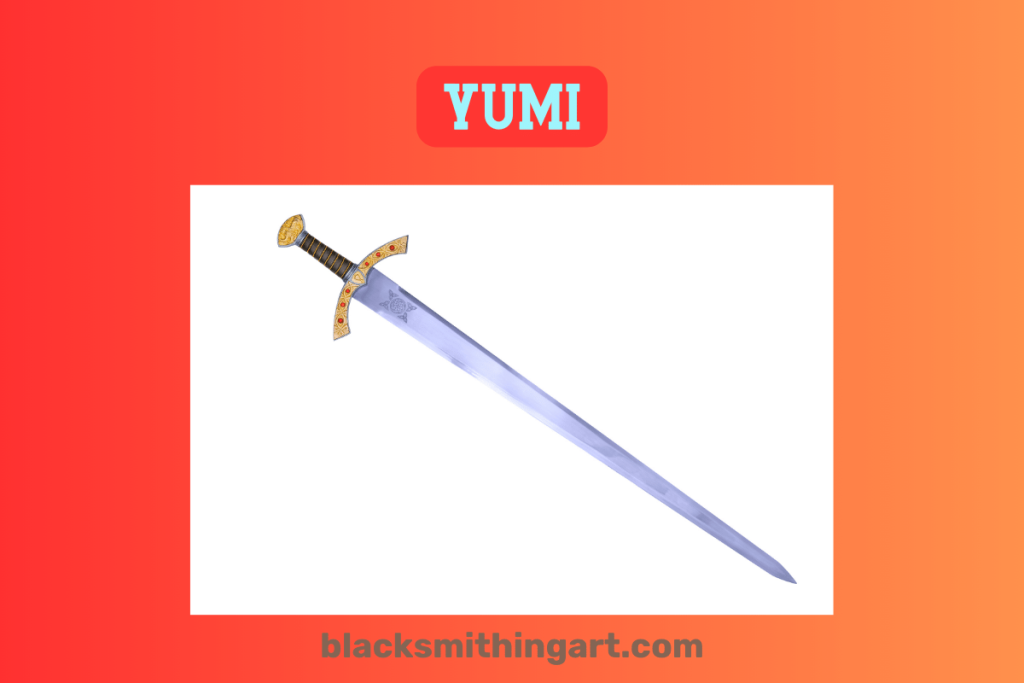
Despite being the literal term for a bow in Japanese, it is more frequently used to describe the asymmetrical traditional Japanese bows. These bows stood out due to their remarkable height—they were typically taller than their archer.
The samurai were expert archers who used these weapons during battles on horseback since they could eliminate opponents in bigger groups from a distance.
Katana
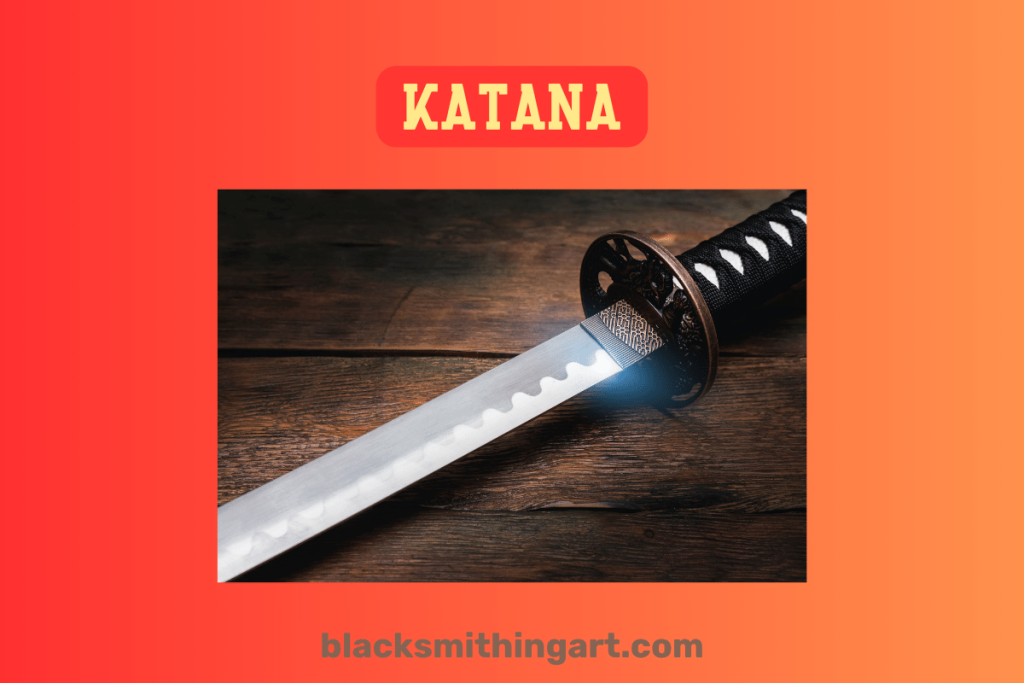
This Japanese sword is one of the most widely recognized ancient weapons. Even if you’re not very well-informed about it, you’ve undoubtedly heard about it. Katanas are prized collectibles because of their historical significance in feudal Japan.
Traditionally, Tamahagane, a distinctive kind of Japanese steel, is used to make katanas. This, along with the tedious smelting process that goes into making one katana, produces a durable weapon with a sharp edge.
The katana was used for thrusting or stabbing during the Muromachi and Edo period. It is quite shorter compared to the tachi and was used for ground combat, challenges, and law enforcement.
Yari
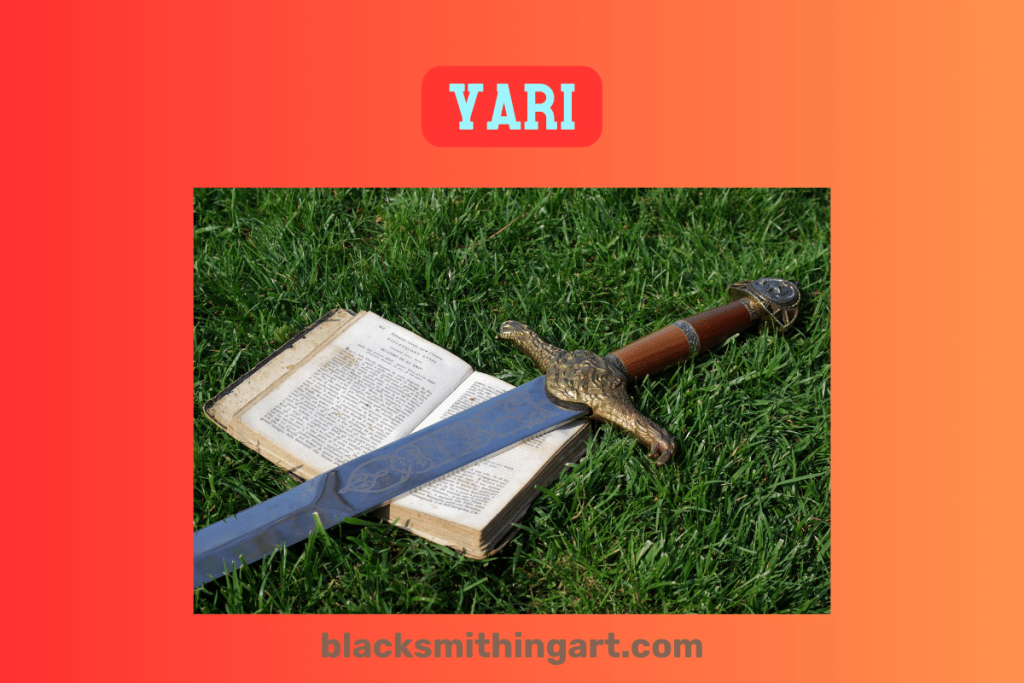
The yari was shaped like a spear or pike and had a straight blade that may be anywhere from a few centimeters to three feet or more. The blades are made like a traditional Japanese sword with minor modifications such as protrusions along the flat side. These blades are affixed to extremely long shafts that differ in length and ornamentation.
Tanto

Tantos, which are shorter blades compared to wakizashi, were used by samurai warriors on horseback as supplementary weapons while engaging in close combat. Tanto blades were often presented as gifts to the bride at a traditional Japanese wedding because it was believed that they would provide sacred protection and drive away evil spirits.
Tachi
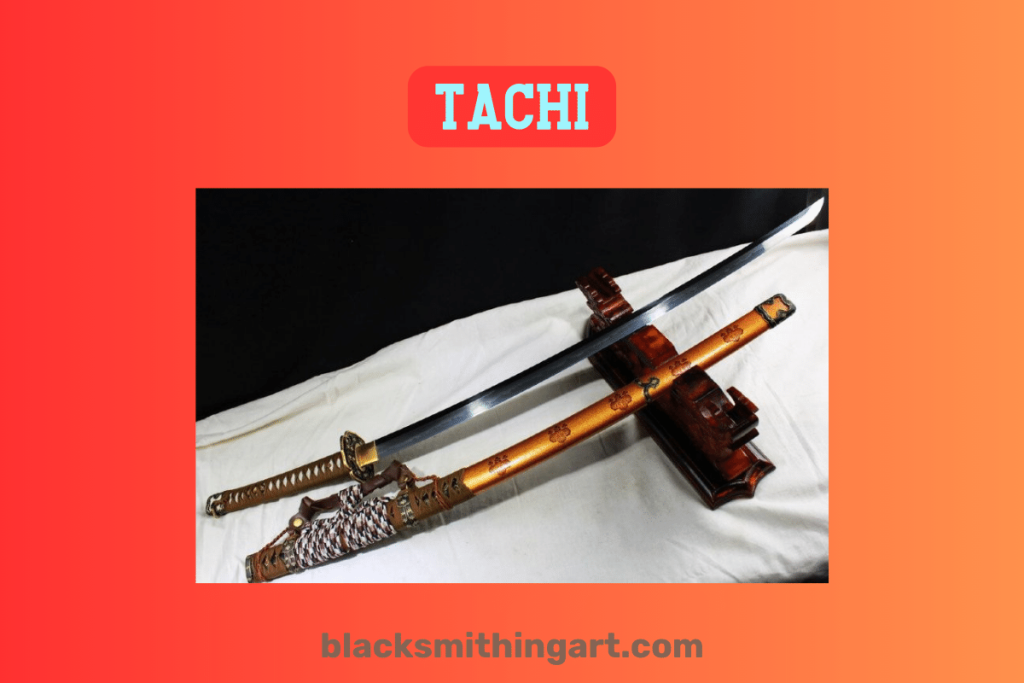
The term “tachi” was frequently used to describe longer, more curved swords. The armored samurai warriors of the Heian and Muromachi periods wielded these weapons on their horses. This type of sword is older and has a more pronounced curvature. Legend has it that the spirits housed within these ancient swords guided and guarded their samurai.
Tanegashima
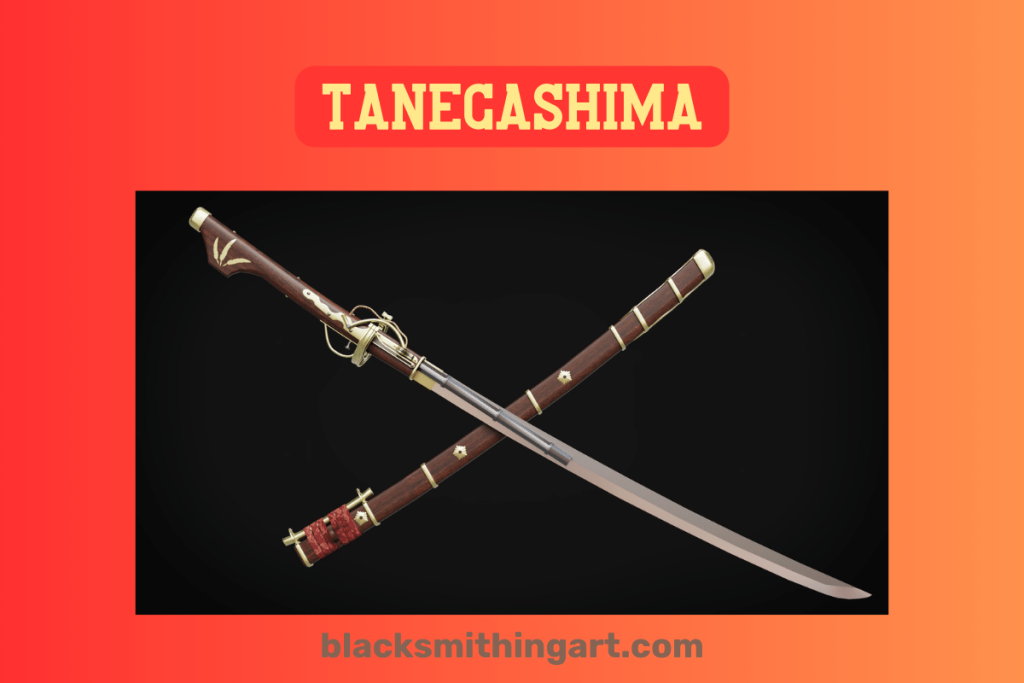
This is the Japanese equivalent of the European arquebus. Oda Nobunaga used the weapon to give his army the upper hand in numerous battles during the Sengoku period.
In contrast to the European arquebus, the Japanese upgraded the gun by a variety of methods, including staggered firing, which caused a series of bullets to discharge constantly.
Armor

Scholars claim that Japanese armor first appeared in the fourth century, and it appears to have come from China through Korea. Before it developed into its distinctive, boxier design with decorative elements intended to frighten enemies during battle, the earlier versions of the armor resembled those of the surrounding countries.
Traditional armor worn during battles eventually became unnecessary during the peaceful Edo Period, giving rise to the more elaborate armor that was considered a status symbol for prominent samurai generals. Nonetheless, less visible and lightweight armor later became more prevalent for personal protection.
Sengoku period

The Onin War, which broke out in 1467 and lasted for almost ten years, destroyed Kyoto and overthrew the Ashikaga Shogunate. Due to this, the nation entered the Sengoku Period (“warring states period”), during which Samurai clans struggled and feudal lords from various regions engaged in several conflicts with one another.
This era is equivalent to the late Muromachi period. There are various theories about when the Sengoku Period came to an end. The oldest dates back to Oda Nobunaga’s invasion of Kyoto in 1568, and the most recent is the suppression of the Shimabara Rebellion in 1638.
Therefore, the Sengoku period overlaps with the Muromachi period, the Azuchi–Momoyama period, and the Edo period.
Samurai culture became less rigid during the Sengoku Period when individuals from lower social classes occasionally rose to prominence as warriors and thus became de facto samurai.
Who is Japan’s most famous swordsman?
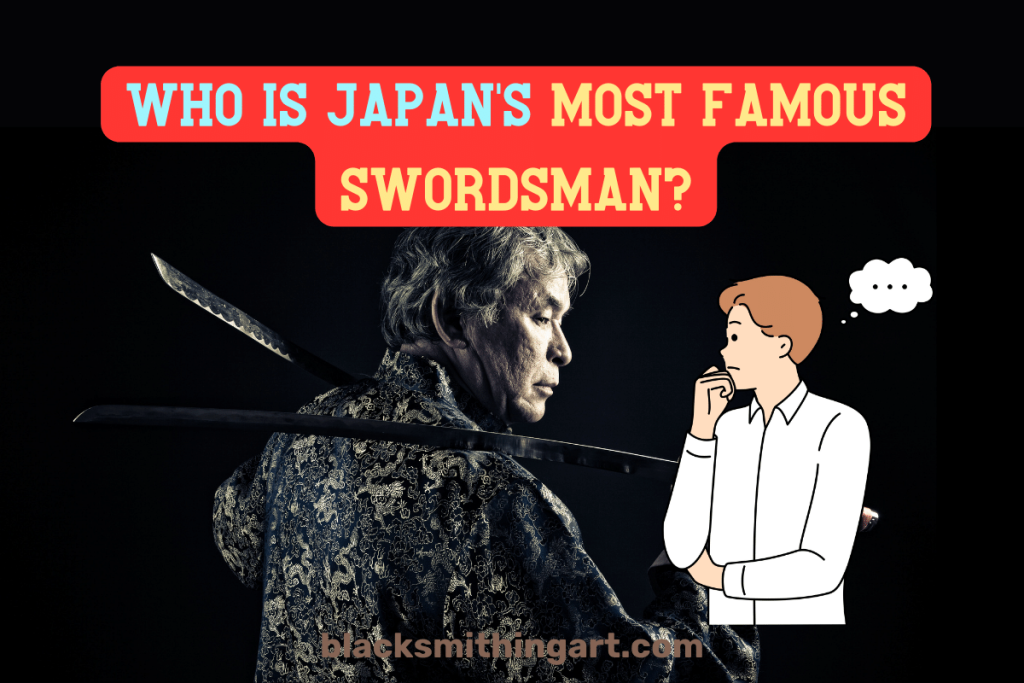
Miyamoto Musashi lived under a stringent set of 21 rules to prepare himself to become the greatest and most famous samurai in Japanese history. Prominent Japanese businessmen still embrace these principles today.
His father was a renowned martial artist named Miyamoto Munisai. That could be the reason Musashi developed a deep affection for swords and aspired to become Japan’s finest swordsman. However, he had a tumultuous and unhealthy relationship with his father.
As a child of divorce, he was frequently subjected to rumors and gossip regarding his birth mother. He and his stepmother did not get along.
He began to question his father’s martial arts techniques as he grew older and more skilled with the sword. This infuriated his father, and Musashi regularly left the house to stay at the residence of his Uncle Dorinbo, a Shinto priest who eventually became responsible for him.
Musashi traveled around Japan for the next few years, dueling with people to improve his fighting techniques and establish his reputation. The majority of these fights were lost to history. However, the most significant duel he ever had was his final duel against Sasaki Kojiro, a noble from the samurai class.
This Japanese samurai swordsman adopted Zen Buddhism and went on to become a martial arts instructor. He also took up painting and calligraphy. In reality, as a gentleman scholar, artist, and master of self-control, he became the ideal version of a master swordsman.
FAQ
What are Japanese swordsman called?
Kenjutsu is the collective term used to refer to Japanese swordsmen.
Who was the deadliest Japanese swordsman?
Miyamoto Musashi, a martial arts master was the deadliest Japanese samurai swordsman. He created a style of Kenjutsu that uses two swords.
Who is the worlds greatest swordsman in Japanese?
Miyamoto Musashi is the greatest Japanese samurai swordsman. He is a hero in Japanese culture. His Book of Five Rings is regarded as a classic piece on martial arts and strategy.
Conclusion
These legendary warriors have had a significant impact on both Japanese culture and history. These samurai warriors were respected for their honor, discipline, military prowess, organization, and war tactics.
Their armor and weapons are now a representation of Japanese martial arts and Japanese culture, and their heritage still serves as an inspiration to people all around the world.
I hope this guide is of immense help to you.

